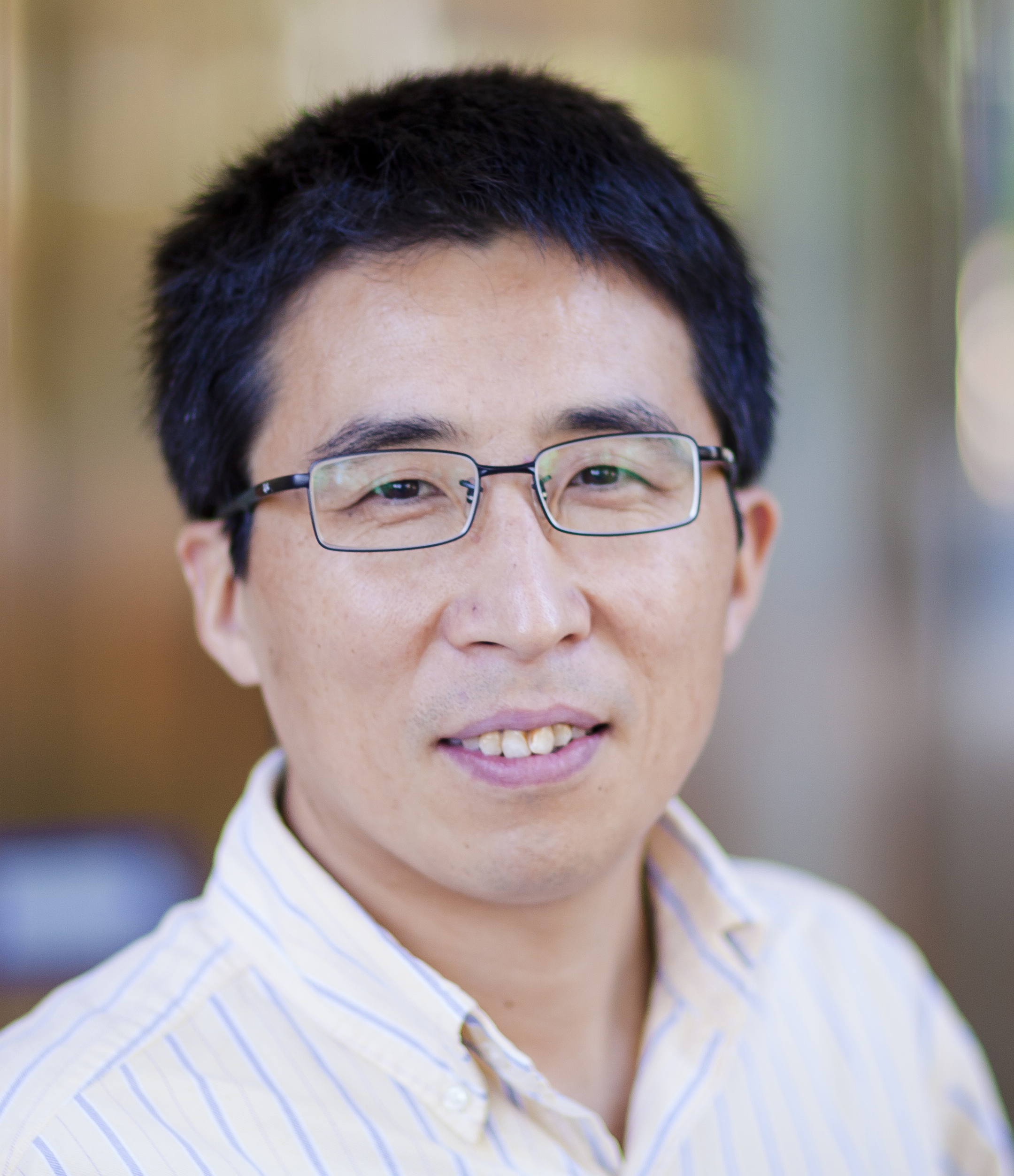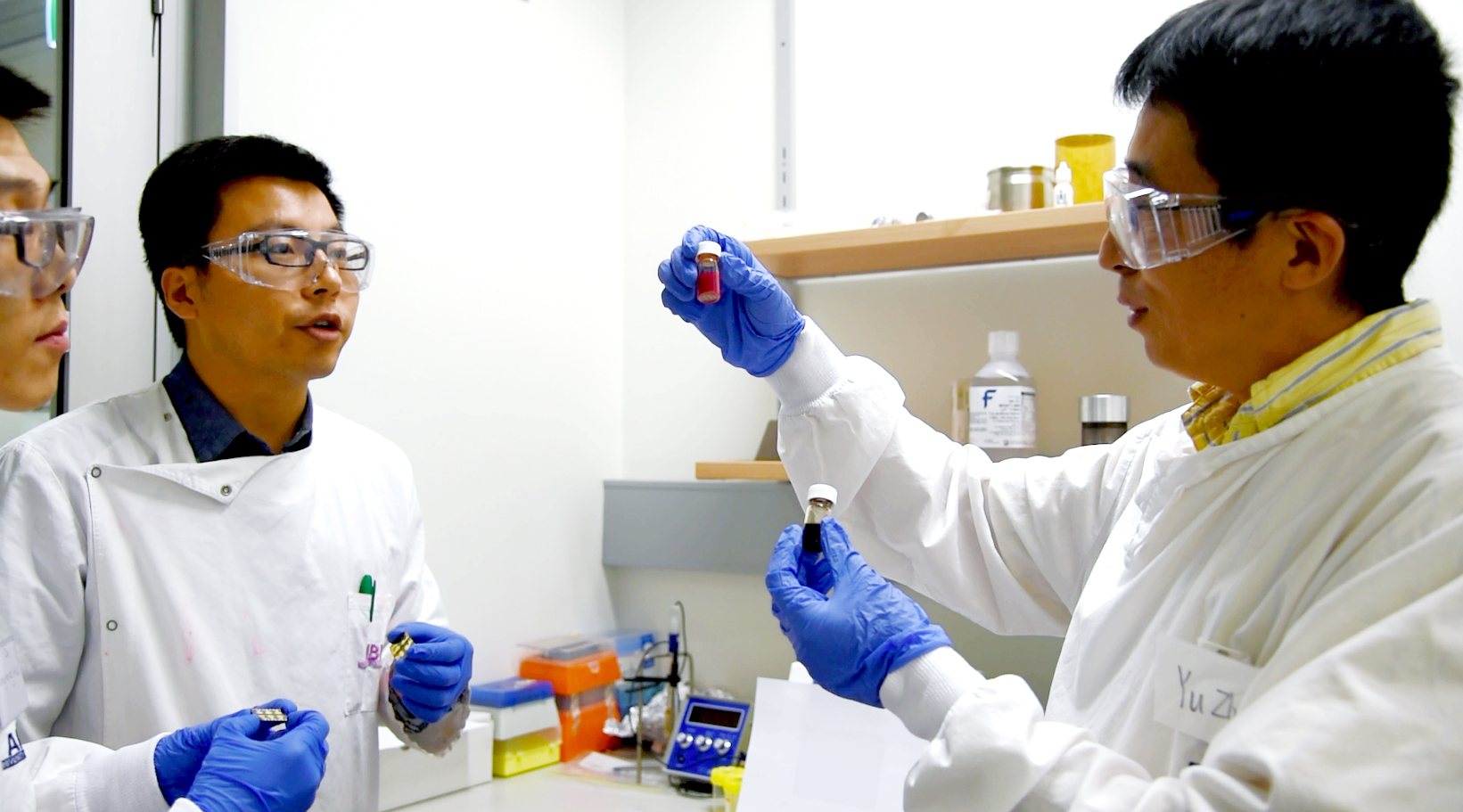Professor Lianzhou Wang and his colleagues at AIBN are developing artificial leaves to capture CO2 and convert it into carbon-neutral fuels

Just behind the University of Queensland’s Australian Institute for Bioengineering and Nanotechnology (AIBN) lay a quiet, well-tended cricket field surrounded by towering eucalyptus trees. Just beyond this, the Brisbane river flows, mostly obscured by a dense collection of jacarandas, fig trees, she-oaks, eucalypts, and tall grasses lining its banks.
Consequently, the view from Professor Lianzhou Wang’s fifth floor office at AIBN is almost entirely green. He sees a lot to admire in that greenery, and — being a chemical engineer and nanotechnologist — a lot to improve upon, as well.
Wang is a Professor in the UQ School of Chemical Engineering and Senior Group Leader at AIBN. His research focusses on the development of highly efficient semiconductor materials. At first glance, this may seem unrelated to the eucalypt leaves swaying just outside his window, but a key part of his fascination with semiconductors lies in their potential to convert solar energy and CO2 into storable chemical fuels. This is something plants have been doing for nearly 500 million years, and their single-celled predecessors were doing a few billion years before that.
“In photosynthesis, plants use sunlight to convert CO2 and water into hydrocarbons like glucose, which is stored in the plant,” explains Professor Wang.
Yet, as it turns out, plants are not as good at this as you might think.
“The efficiency of this process is only about 1-2% for plants, which is very low,” he says, noting that part of the problem is all that green.
“The solar spectrum is much broader than the colour green,” he says. “That means green plants only absorb a certain amount of light, so much of the light is not fully used.”
Despite this, photosynthesis remains the most efficient and sustainable method of solar driven CO2 capture available — human technology has yet to beat it. But if Professor Wang and his colleagues have their way, that could soon change.
“We want to develop a new semiconductor material system that can remake this process, that can convert CO2 and water into valuable chemicals, but with higher efficiency,” says Professor Wang.
This artificial photosynthesis would have multiple benefits, he says. Firstly, CO2 is a long-lived greenhouse gas and rising atmospheric levels of CO2 is a major contributor to climate change, so reducing those levels is critical. Moreover, CO2 happens to be a potentially valuable source of energy in its own right.
The idea is to capture CO2 before it reaches the atmosphere, and then use it to make valuable hydrocarbons such as methanol, ethanol or a variety of other storable fuels and materials. Of course, to do this, CO2 must be broken down into carbon and oxygen. But because it’s a very stable molecule, that involves an energy intensive process. This is where the semiconductors come in.
A semiconductor material is able to absorb solar energy, and in so doing, the semiconductor becomes so excited that it generates charged particles including negatively charged electrons and positively charged ‘electron holes’.
These charged particles are useful in two important ways, says Professor Wang. They can be used to create an electric current, such as in the case of solar panels, or they can be used to drive chemical reactions.
One such reaction involves splitting water molecules to produce pure oxygen and hydrogen. The hydrogen can then be used as a fuel to replace fossil fuels. Professor Wang explains that this would be a much cleaner way of producing hydrogen than the current energy intensive method of steam reforming natural gas.
The charged particles in the semiconductor can also be used to drive chemical reactions that, with the assistance of water, break up CO2 to produce valuable chemicals.
The big challenge in the development of ‘artificial leaves’ based on such semiconductors is getting the charged particles to hang around long enough to perform the reaction.
“The charged particles separate when the semiconductor absorbs the energy of light, but they can also come back together very quickly,” says Professor Wang.
Because of this, there is not enough time for useful chemistry to take place.
“We want to design better photocatalysts that can keep the charged particles separate for a longer period of time without recombining, so they can be used to drive the chemical reactions,” he explains.
Specifically, he and his colleagues will use their expertise to design semiconductor nanomaterials with optimal composition, shape, size and functionality in order to achieve this.
“The design of the plane was inspired by birds, but aircraft can now fly much faster than birds,” he says. “So we believe artificial leaves can also work more efficiently than trees in converting waste CO2 into valuable chemicals at large scale.”
“If we can successfully use the artificial photosynthesis process to produce valuable hydrocarbons and hydrogen, which can be used as alternative fuels, this will help shift the industry landscape from a fossil fuel consuming process to a renewable energy driven process,” he adds. “This would reduce carbon emissions and also increase renewable energy usage.”



